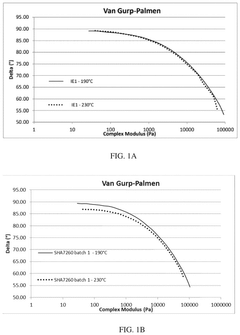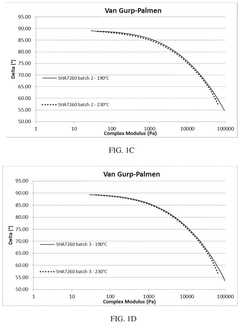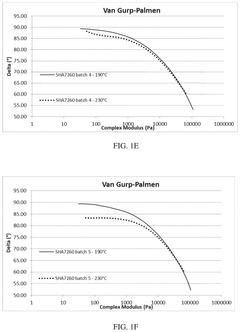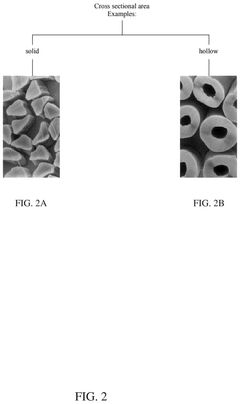HDPE in Building Insulation: Improving Sustainability
HDPE Insulation Evolution
The evolution of HDPE insulation in building applications has been marked by significant advancements in material science and manufacturing processes. Initially introduced in the 1950s, High-Density Polyethylene (HDPE) quickly gained traction in various industries due to its excellent chemical resistance, durability, and versatility. However, its application in building insulation took time to develop as the industry focused on traditional materials like fiberglass and mineral wool.
The 1970s energy crisis sparked renewed interest in energy-efficient building materials, leading to increased research into alternative insulation options. During this period, HDPE began to emerge as a potential candidate for building insulation, primarily due to its low thermal conductivity and moisture resistance properties. Early applications were limited to specialized uses, such as radiant barrier systems in attics and crawl spaces.
The 1980s and 1990s saw significant improvements in HDPE foam technology, enabling the production of closed-cell HDPE foam insulation. This development marked a turning point in HDPE's role in building insulation, as it combined the material's inherent properties with enhanced insulative performance. Manufacturers began to explore various production techniques, including extrusion and injection molding, to create HDPE insulation products with consistent density and cell structure.
As environmental concerns gained prominence in the late 1990s and early 2000s, the focus shifted towards improving the sustainability of HDPE insulation. Researchers and manufacturers began exploring ways to incorporate recycled HDPE into insulation products, reducing the reliance on virgin materials. This period also saw the development of more energy-efficient production processes, aiming to reduce the overall carbon footprint of HDPE insulation manufacturing.
The past decade has witnessed a surge in innovation focused on enhancing the performance and sustainability of HDPE insulation. Advanced blowing agents and additives have been introduced to improve the insulation's R-value while minimizing environmental impact. Nanotechnology has also played a role, with researchers exploring the potential of nanocomposites to enhance thermal performance and fire resistance.
Recent developments have centered on creating fully recyclable HDPE insulation systems, addressing end-of-life concerns and promoting circular economy principles. Manufacturers are now developing take-back programs and exploring chemical recycling technologies to ensure that HDPE insulation can be effectively reprocessed at the end of its useful life.
Looking forward, the evolution of HDPE insulation is likely to continue focusing on sustainability and performance optimization. Emerging trends include the development of bio-based HDPE alternatives, integration of phase-change materials for enhanced thermal regulation, and the use of smart manufacturing techniques to produce custom-designed insulation solutions for specific building requirements.
Market Demand Analysis
The market demand for sustainable building insulation solutions, particularly those incorporating High-Density Polyethylene (HDPE), has been steadily increasing in recent years. This growth is driven by several factors, including stricter energy efficiency regulations, rising environmental awareness, and the construction industry's shift towards more sustainable practices.
The global building insulation market, which encompasses HDPE-based solutions, is experiencing significant expansion. This growth is primarily fueled by the increasing focus on energy conservation in both residential and commercial buildings. As governments worldwide implement more stringent building codes and energy efficiency standards, the demand for high-performance insulation materials like HDPE is expected to surge.
In the residential sector, homeowners are becoming more conscious of their energy consumption and carbon footprint. This awareness has led to a growing interest in sustainable insulation materials that can effectively reduce heating and cooling costs while minimizing environmental impact. HDPE insulation, known for its durability, moisture resistance, and recyclability, is well-positioned to meet these consumer demands.
The commercial building sector is also a key driver of market growth for HDPE insulation. Large-scale construction projects, including office buildings, shopping centers, and industrial facilities, are increasingly adopting sustainable building practices. This trend is partly due to corporate sustainability initiatives and the desire to achieve green building certifications such as LEED (Leadership in Energy and Environmental Design).
Geographically, North America and Europe are currently the largest markets for HDPE insulation in building applications. These regions have well-established construction industries and stringent energy efficiency regulations. However, emerging economies in Asia-Pacific and Latin America are expected to witness rapid growth in the coming years, driven by urbanization, infrastructure development, and increasing awareness of sustainable building practices.
The renovation and retrofit market segment presents a significant opportunity for HDPE insulation. As older buildings are upgraded to meet modern energy efficiency standards, there is a growing demand for insulation materials that can be easily installed in existing structures without compromising performance or sustainability.
Despite the positive market outlook, challenges remain. The initial cost of HDPE insulation compared to traditional materials can be a barrier to adoption, particularly in price-sensitive markets. Additionally, competition from other sustainable insulation materials, such as recycled denim or cellulose, may impact market share.
Looking ahead, the market for HDPE in building insulation is expected to continue its growth trajectory. Innovations in manufacturing processes that improve the material's performance and reduce production costs will likely drive further adoption. Moreover, as circular economy principles gain traction, the recyclability of HDPE insulation will become an increasingly valuable selling point, potentially opening new market opportunities in the sustainable construction sector.
Technical Challenges
The use of High-Density Polyethylene (HDPE) in building insulation faces several technical challenges that need to be addressed to improve its sustainability. One of the primary issues is the material's inherent flammability. HDPE, being a petroleum-based product, is combustible and can contribute to the spread of fire in buildings. This necessitates the development of effective flame retardant additives that do not compromise the material's insulation properties or introduce toxic substances.
Another significant challenge is the long-term durability of HDPE insulation. While HDPE is known for its chemical resistance and moisture barrier properties, prolonged exposure to UV radiation and extreme temperatures can lead to degradation. This degradation can result in reduced insulation performance over time, potentially increasing energy consumption and negating the initial sustainability benefits.
The recyclability of HDPE insulation presents a complex technical hurdle. Although HDPE is theoretically recyclable, the presence of additives, coatings, and contaminants in building insulation can make the recycling process difficult and economically unfeasible. Developing efficient separation and purification techniques for post-consumer HDPE insulation is crucial for closing the loop in the material's lifecycle.
Energy-intensive manufacturing processes pose another challenge to the sustainability of HDPE insulation. The production of HDPE requires significant amounts of fossil fuels, both as raw material and energy source. Improving the energy efficiency of manufacturing processes and transitioning to renewable energy sources are essential steps in reducing the carbon footprint of HDPE insulation production.
The thermal performance of HDPE insulation, while good, still lags behind some alternative materials. Enhancing its insulation properties without increasing thickness or weight is a key area for innovation. This could involve developing new foam structures, incorporating nanomaterials, or creating hybrid insulation systems that leverage the strengths of HDPE while compensating for its limitations.
Lastly, the environmental impact of HDPE production and disposal remains a significant concern. Microplastic pollution from HDPE degradation and the release of greenhouse gases during manufacture and incineration are pressing issues. Addressing these challenges requires advancements in biodegradable additives, carbon capture technologies, and end-of-life management strategies for HDPE insulation products.
Current HDPE Solutions
01 Recycling and reuse of HDPE
Developing methods for recycling and reusing HDPE to reduce environmental impact. This includes techniques for processing post-consumer HDPE waste, improving the quality of recycled HDPE, and incorporating recycled HDPE into new products. These approaches aim to create a circular economy for HDPE materials and reduce the reliance on virgin plastics.- Recycling and reuse of HDPE: Developing methods for recycling and reusing HDPE to reduce environmental impact. This includes improving sorting techniques, enhancing recycling processes, and finding new applications for recycled HDPE materials. These efforts contribute to a circular economy and reduce the need for virgin HDPE production.
- Biodegradable HDPE composites: Creating biodegradable HDPE composites by blending HDPE with natural fibers or biodegradable additives. This approach aims to improve the environmental sustainability of HDPE products while maintaining their desirable properties. The resulting materials can degrade more easily in natural environments.
- Improved HDPE production processes: Developing more efficient and environmentally friendly HDPE production processes. This includes optimizing catalysts, reducing energy consumption, and minimizing waste generation during manufacturing. These improvements can lead to a more sustainable HDPE production chain.
- HDPE alternatives and substitutes: Researching and developing alternatives or substitutes for HDPE that offer similar properties but with improved sustainability profiles. This may include bio-based plastics, renewable materials, or novel polymer blends that can replace HDPE in various applications while reducing environmental impact.
- HDPE waste management and upcycling: Implementing innovative waste management strategies and upcycling techniques for HDPE products. This includes developing new methods for collecting, sorting, and processing HDPE waste, as well as finding creative ways to repurpose HDPE materials into higher-value products, thereby extending their lifecycle and reducing environmental impact.
02 Biodegradable HDPE composites
Creating biodegradable HDPE composites by blending HDPE with biodegradable materials or additives. These composites aim to maintain the desirable properties of HDPE while improving its environmental impact by enabling faster decomposition after disposal. Research focuses on optimizing the blend ratios and identifying suitable biodegradable components.Expand Specific Solutions03 Improved HDPE production processes
Developing more sustainable HDPE production processes that reduce energy consumption, minimize waste, and lower greenhouse gas emissions. This includes optimizing catalysts, improving reactor designs, and implementing more efficient polymerization techniques. These advancements aim to make HDPE manufacturing more environmentally friendly and cost-effective.Expand Specific Solutions04 HDPE alternatives and substitutes
Researching and developing alternatives or substitutes for HDPE that offer similar properties but with improved sustainability profiles. This includes exploring bio-based polymers, renewable resources, and novel materials that can replace HDPE in various applications while reducing environmental impact.Expand Specific Solutions05 HDPE waste management and upcycling
Implementing innovative waste management strategies and upcycling techniques for HDPE products. This involves developing new applications for HDPE waste, creating value-added products from recycled HDPE, and establishing efficient collection and sorting systems to maximize HDPE recovery and reuse.Expand Specific Solutions
Key Industry Players
The HDPE building insulation market is in a growth phase, driven by increasing demand for sustainable construction materials. The market size is expanding rapidly, with projections indicating significant growth in the coming years. Technologically, HDPE insulation is maturing, with major players like Dow Global Technologies LLC, SABIC Global Technologies BV, and ExxonMobil Chemical Patents, Inc. leading innovation. These companies are focusing on improving HDPE's sustainability profile and performance characteristics. Academic institutions such as The University of North Carolina at Charlotte and École Polytechnique Fédérale de Lausanne are contributing to research and development, pushing the boundaries of HDPE's applications in building insulation. The competitive landscape is diverse, with both established chemical companies and specialized insulation manufacturers vying for market share.
Dow Global Technologies LLC
NOVA Chemicals Corp.
HDPE Innovations
- A polymer composition comprising high-density polyethylene (HDPE) where at least a portion of the ethylene is sourced from renewable carbon, combined with a primary antioxidant (isocyanurate), a secondary antioxidant (diphosphite), and a neutralizer (layered double hydroxide), which enhances thermal stability, reduces die-buildup and additive migration, and improves processing efficiency.
- A roof covering system utilizing High Density Polyethylene (HDPE) tiles with a simplified mounting system and improved thermal insulation, which reduces weight, installation time, and costs by using HDPE tiles that mimic the appearance of slate tiles but are lighter, easier to handle, and provide better thermal resistance.
Environmental Impact
The environmental impact of HDPE in building insulation is a critical consideration in the pursuit of sustainable construction practices. High-density polyethylene (HDPE) insulation materials offer several advantages in terms of energy efficiency and durability, but their environmental footprint requires careful examination.
HDPE insulation contributes to reduced energy consumption in buildings by providing effective thermal resistance. This leads to lower heating and cooling demands, resulting in decreased greenhouse gas emissions associated with energy production. The long lifespan of HDPE insulation further enhances its environmental benefits, as it reduces the need for frequent replacements and minimizes waste generation over time.
However, the production of HDPE insulation materials raises environmental concerns. The manufacturing process relies heavily on fossil fuel resources, contributing to carbon emissions and resource depletion. Additionally, the use of chemical additives in HDPE production may pose risks to ecosystems if not properly managed.
End-of-life considerations for HDPE insulation present both challenges and opportunities. While HDPE is recyclable, the presence of additives and contaminants can complicate the recycling process. Improved recycling technologies and infrastructure are necessary to maximize the material's circularity and reduce its environmental impact.
The potential for microplastic pollution from HDPE insulation is an emerging concern. Weathering and degradation of HDPE materials may release microplastics into the environment, affecting soil and water ecosystems. Research is ongoing to assess the long-term implications of this issue and develop mitigation strategies.
Efforts to improve the sustainability of HDPE insulation focus on several key areas. The incorporation of recycled content in HDPE production reduces reliance on virgin materials and promotes a circular economy. Advancements in bio-based HDPE formulations offer promising alternatives to traditional petroleum-based products, potentially lowering the carbon footprint of insulation materials.
Life cycle assessments (LCAs) play a crucial role in evaluating the overall environmental impact of HDPE insulation. These comprehensive analyses consider factors such as raw material extraction, manufacturing processes, transportation, use phase, and end-of-life scenarios. LCA results guide decision-making and drive improvements in the environmental performance of HDPE insulation products.
In conclusion, while HDPE insulation contributes to energy efficiency in buildings, addressing its environmental impact requires a multifaceted approach. Continued research and innovation in sustainable production methods, recycling technologies, and bio-based alternatives are essential to enhance the overall sustainability of HDPE in building insulation applications.
Regulatory Framework
The regulatory framework surrounding the use of HDPE in building insulation plays a crucial role in shaping the industry's approach to sustainability. As governments and international organizations increasingly prioritize environmental protection and energy efficiency, the regulations governing building materials and construction practices have evolved significantly.
In the European Union, the Construction Products Regulation (CPR) sets the standards for construction materials, including insulation products. The CPR mandates that all construction products sold in the EU must have a Declaration of Performance (DoP) and CE marking, which includes information on their environmental impact. This regulation has pushed manufacturers to improve the sustainability of their products, including HDPE insulation materials.
The United States has implemented similar measures through the International Energy Conservation Code (IECC) and ASHRAE standards. These codes set minimum requirements for building energy efficiency, indirectly influencing the use of sustainable insulation materials like HDPE. Additionally, the U.S. Green Building Council's LEED certification program incentivizes the use of environmentally friendly building materials, further driving the adoption of sustainable HDPE insulation solutions.
In recent years, many countries have introduced regulations specifically targeting the reduction of embodied carbon in construction materials. For instance, the UK's Part L Building Regulations now include considerations for the whole-life carbon impact of buildings, which encompasses the carbon footprint of insulation materials like HDPE. This shift in focus has prompted manufacturers to innovate and develop more sustainable HDPE insulation products.
The regulatory landscape also extends to waste management and recycling of building materials. The EU's Waste Framework Directive and similar regulations in other regions have set targets for construction and demolition waste recycling, encouraging the development of recyclable and reusable HDPE insulation solutions. These regulations have spurred innovation in the design of HDPE insulation products that can be easily disassembled and recycled at the end of their life cycle.
Furthermore, chemical regulations such as REACH in the EU and TSCA in the US have implications for the additives and flame retardants used in HDPE insulation. These regulations aim to ensure the safety of chemical substances used in consumer products, including building materials. As a result, manufacturers are compelled to develop HDPE insulation formulations that meet both performance and safety standards while minimizing environmental impact.
As the regulatory framework continues to evolve, it is likely that future regulations will place even greater emphasis on the circular economy, mandating higher recycled content in building materials and setting more stringent requirements for end-of-life management. This ongoing regulatory pressure will continue to drive innovation in HDPE insulation, pushing the industry towards more sustainable practices and products.







